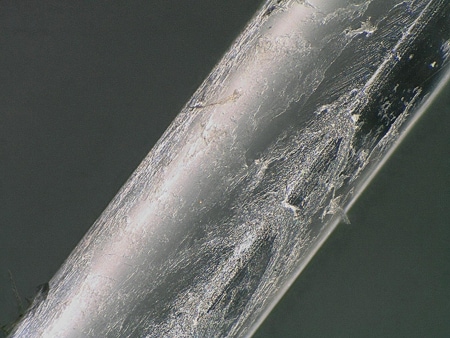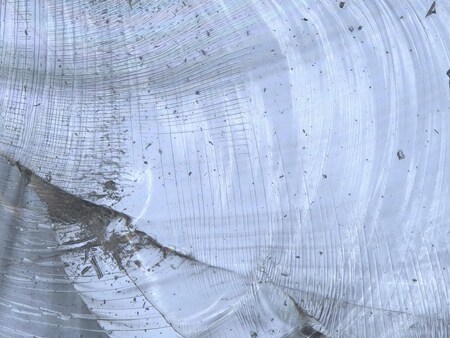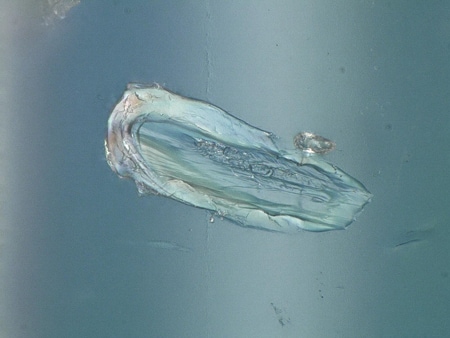Observation of Optical Fibres Using a Digital Microscope
Optical fibres are made from quartz glass and plastic and are mainly used in Internet communication. This section provides an overview of optical fibres and introduces examples of their observation using a digital microscope.
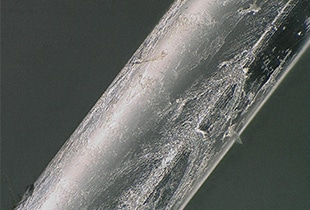
- Optical Fibres and the Structure of Optical Fibre Cables
- Benefits of Using Optical Fibres
- Multi-mode Fibres and Single-mode Fibres
- Example Observations of Optical Fibre Surface Flaws Using a Digital Microscope
Optical Fibres and the Structure of Optical Fibre Cables
- Optical fibre core wire
-
The core in the centre of the fibre is the transmission path for light. The cladding is a layer of material having a lower refractive index that encloses the core.
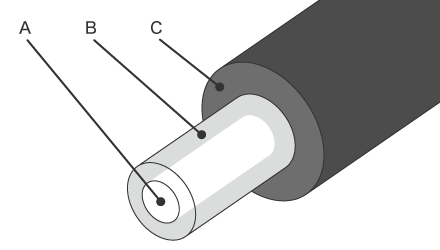
- A: Core
- B: Cladding
- C: Outer jacket
- Optical fibre cable
-
The tension member in the centre of the cable mitigates tension during installation.
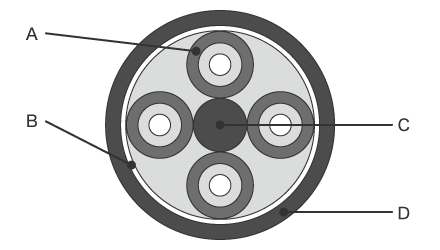
- A: Optical fibre core wire
- B: Press winding
- C: Tension member
- D: Outer jacket
Benefits of Using Optical Fibres
- Faster communication speed and greater communication capacity (1000 Mbps) than the ADSL method (50 Mbps), which uses conventional telephone lines
- Allows for long-distance communication by minimising transmission loss
- Not electrical communication, so not affected by electromagnetic noise
- Lightweight and compact, with one fibre, including the outer jacket, having an outer diameter of 0.25 mm
- Quartz, the fibre raw material, has a longer service life and lower resource consumption than copper
- Explosion-proof, with no chance of short circuit accidents
Multi-mode Fibres and Single-mode Fibres
There are two types of optical fibres: multi-mode and single-mode.
Single-mode fibres have a core diameter of approximately 10 micrometres and are limited to a single light pulse. Multi-mode fibres are larger with a core diameter of approximately 50 micrometres and can transmit multiple light pulses with different reflection angles.
- Single-mode fibre
-
Ideal for mid- to long-range transmission over lengths of a few kilometres or more. This type is used for intra-city, inter-city, and international submarine communication.
Core diameter: 9 μm
Cladding diameter: 125 μm
- Multi-mode fibre
-
Ideal for short-range transmission over lengths of a few meters to a few hundred meters. This type is used for wiring within buildings and between devices.
Core diameter: 50 μm or 62.5 μm
Cladding diameter: 125 μm
Example Observations of Optical Fibre Surface Flaws Using a Digital Microscope
This section introduces the latest examples of observation of optical fibre surface flaws using KEYENCE’s VHX Series 4K Digital Microscope.
